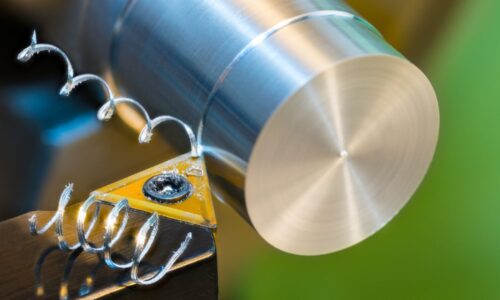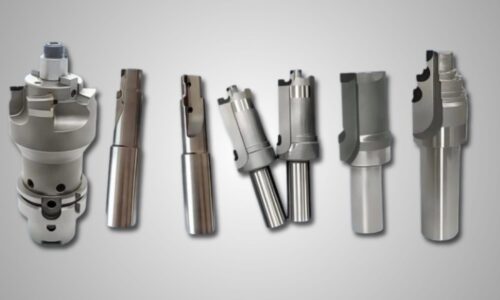
How to Select the Right Diamond Gauging Point for Your Application
- By akshada
- Posted on
Among the most important precision measurement tools used for machining and manufacturing intricate designs with tight tolerances, diamond gauging points would stand at the top. Whether in automotive, aerospace, or any other precision engineering sectors, selecting the right diamond gauging point will have a major impact on the quality of accuracy towards your work.
Jain Diamond Tools is an industry-leading diamond tool manufacturer offering a wide and productive range of high-performance diamond gauging points for a variety of applications. In this blog, we are going to guide you on what to consider when selecting the diamond gauging point perfectly required for your needs.
What is a Diamond Gauging Point?
A diamond gauging point is a precise tool with the extraordinary high accuracy to measure check and inspect the dimension of workpieces. Such tools are useful in industries requiring very hard, abrasive, highly accurate material, such as automotive manufacturing, metalworking, or machining.
Because of the uniqueness of diamond’s hardness and strength, its gauging points prove to be the best gauge for hard materials like steel, ceramics, glass, and composites that are highly measurable, precise, and wearless to the workpiece.
1. Understand the Material of the Workpiece
First of all, selecting a suitable diamond gauging point would begin with material selection of your work piece that you intend to measure since different materials vary depending on their hardness, wear resistance, and surface finishing, which directly affect the diamond gauging point.
- Hard Metals: For hard metals, like steel and titanium, a diamond gauging point having a good-quality synthetic diamond will be require. The synthetic diamond is harder and tougher than the natural diamond that is use thus far and is ideal for much harder metalworking jobs.
- Ceramics and Glass: For brittle yet very hard materials such as ceramics and glass, the exact reading might be achieve employing a diamond gauging point having a fine, pointed tip that does not impress the surface.
- Composites: The presence of layered structures makes composites extremely difficult to measure. It is ensure by using a diamond gauge point with a shape and hardness that measurements are within expectations and do not bring delamination or structural damage.
Why It Matters: If an incorrect-size diamond gauging point is chosen for the material, the measurements may not be accurate, wear on the tool could occur, or even damage to the workpiece. For high precision, tools must be engineered for the material you’re working with.
To answer your need for precision and durability in the job, Jain Diamond Tools offers a variety of diamond gauge points, tailored to suit many different materials, so each tool will give you the precision and durability you need for any job.
2. Consider the Required Precision and Tolerances
In determining which diamond gauging point to choose, knowledge of the degree of precision require in the application is require. The tolerance range varies by industry: general measurements, tight tolerances, and very high precision machining.
- General Measurements: Whenever the tolerances are not too critical, one medium-size diamond gauge tip may prove to be sufficient for the typical measurements perform on a daily basis.
- High precision: In aerospace or automotive manufacturing, tolerance is measure in terms of microns. This means that for any industry where tolerance measurement should reach down to microns, a fine-tip diamond gauging point is vital. The tools are design to give accurate measurements in some of the toughest environments.
Why It Matters: Using the right precision gauge means a product that meets the specifications of the project while maintaining quality values. Tools that don’t fall into any one close tolerance category can easily deliver the wrong product and, hence, less than ideal quality and performance.
Jain Diamond Tools offers a variety of diamond gauge points with precision levels for standard as well as high-precision measurements.
3. Choose the Appropriate Shape and Tip Configuration
Diamond gauging points are available in numerous shapes and point configurations—all for a reason—to be use on different measurement tasks. The appropriate shape should depend on the nature of the measurement, the form of the workpiece, and the amount of accuracy required.
- Conical Tips: Conical tips are used for general gauging when a user requires high precision and strength. It is mostly used for measuring outer surfaces for cylindrical or even flat shapes.
- Flat or Blunt Tips: These tips are used for measuring flat or larger surfaces since they offer a broader contact area and the accuracy of the measurement across the surface is ensured.
- Pointed Tips: Long pointed tips are very precise. They best take measurements of small features or holes and narrow grooves. They are often used in applications requiring a thin, sharp measurement.
Why It Matters: If the wrong shape or configuration is use, inaccurate readings or damage to the workpiece can be the result. The tip needs to be oriented along the surface or feature that you’re measuring to consistently come out with reliable results.
Jain Diamond Tools comes in so many shapes and configurations; you can get just the tool you need—for the most general purpose or for truly special applications.
4. Material Strength and Durability of the Gauging Point
The diamond gauge point material’s strength and hardness can make the difference between its staying in use for a long period of time and failing abruptly. The point of a gauge must stand up to wear from the material being measure, as well as to the conditions in the work environment.
- Diamond Quality: The quality of diamond used in the gauging point has a direct relation with the lifespan of the diamond. Synthetic diamonds offer better hardness and more resistance to wear as compared to natural diamonds, which makes them very good for heavy-duty usage.
- Tool Coating: The gauging point tool may be coat or post-treat to improve durability and resist wear and corrosion and damage from materials measured.
Why It Matters: long-lasting and robust diamond gauging points. Thus, durability is enhance while maintaining performance without breakdown even during long periods of use. The consequence is that the replacement rate of tools drops, and the latter continue to translate to reduced exposure to downtime and greater productivity.
Jain Diamond Tools employ only high-quality synthetic diamonds within its gauging points. These enable excellent durability, accuracy, and resistance to wear in severe conditions.
5. Assess Compatibility with Your Gauging System
The last thing being taken into account is the compatibility of the diamond gauge point with the existing gauge system. Whether it is manual or automated measuring equipment, it should perfectly fit into the gauging system for accurate measurement and correct working.
- Manual Gauging Systems: Manual Gauging Systems: For manual systems, you may use a diamond gauging point along with a specific handle or attachment with the particular equipment to be use. In these cases, it is important that the point be more hand-friendly and precise for application.
- Automated Gauging Systems: If you are doing very high volume production and using automatic or robotic systems, the gauge needs to work with the mechanism of the system. It has to fit into the automation scheme seamlessly and then give consistent accuracy over periods of time.
Why It Matters: In case the gauge point is not compatible with the system, measurement error or even downtime resulting in sometimes system failure may occur. In favor of compatibility with your gear, it increases workflow and minimizes error.
Jain Diamond Tools has manufacturing diamond gauging points for use both in manual and automated systems. This way, the system is compatible with the prevailing setup and works easily.
Conclusion
Actually, the proper diamond gauging point selection is very important in getting the right measurements and even to further maintain the efficiency of your work operations. So with consideration of your work material, precision required, tip configuration, material durability, or system compatibility, you are sure to select the best tool for the job at hand.
At Jain Diamond Tools, we craft our diamond gauge points from various high-quality materials to tackle diverse applications, ranging from general-purpose measurements to precise and demanding tasks. Our tools boast durable materials and top-grade diamonds, ensuring long-lasting performance and accurate results.
Visit Jain Diamond Tools today and find the excellent, reliable, and top-quality diamond gauging points you require for any measurement with our wide range of diamond tools suitable for your measurement needs.
FAQs
Q-1 What are diamond gauging points used for?
Ans- Diamond gauging points are use to measure, check, and inspect the dimensions of hard and abrasive materials with precision.
Q-2 How do I choose the right diamond gauging point?
Ans- Determine your work material, accuracy level required, length of your tip, durability, and compatibility of your gauging point with your entire system.
Q-3 Can I use diamond gauging points for soft materials?
Ans- Diamond gauging points are especially design for hard and abrasive materials like steel, ceramics, and composites, for which softer materials may not strictly require them.
Q-4 Why is diamond quality important in gauging points?
Ans- High-quality diamonds ensure higher durability, better wear resistance, and longer-term accuracy, making them the best candidates in precision measurements.
Q-5 Does Jain Diamond Tools offer customized gauging points?
Ans- The wide variety of diamond gauging points to exactly measure specific measurement is indeed available by Jain Diamond Tools. We will also customize our products in line with your needs as required.





